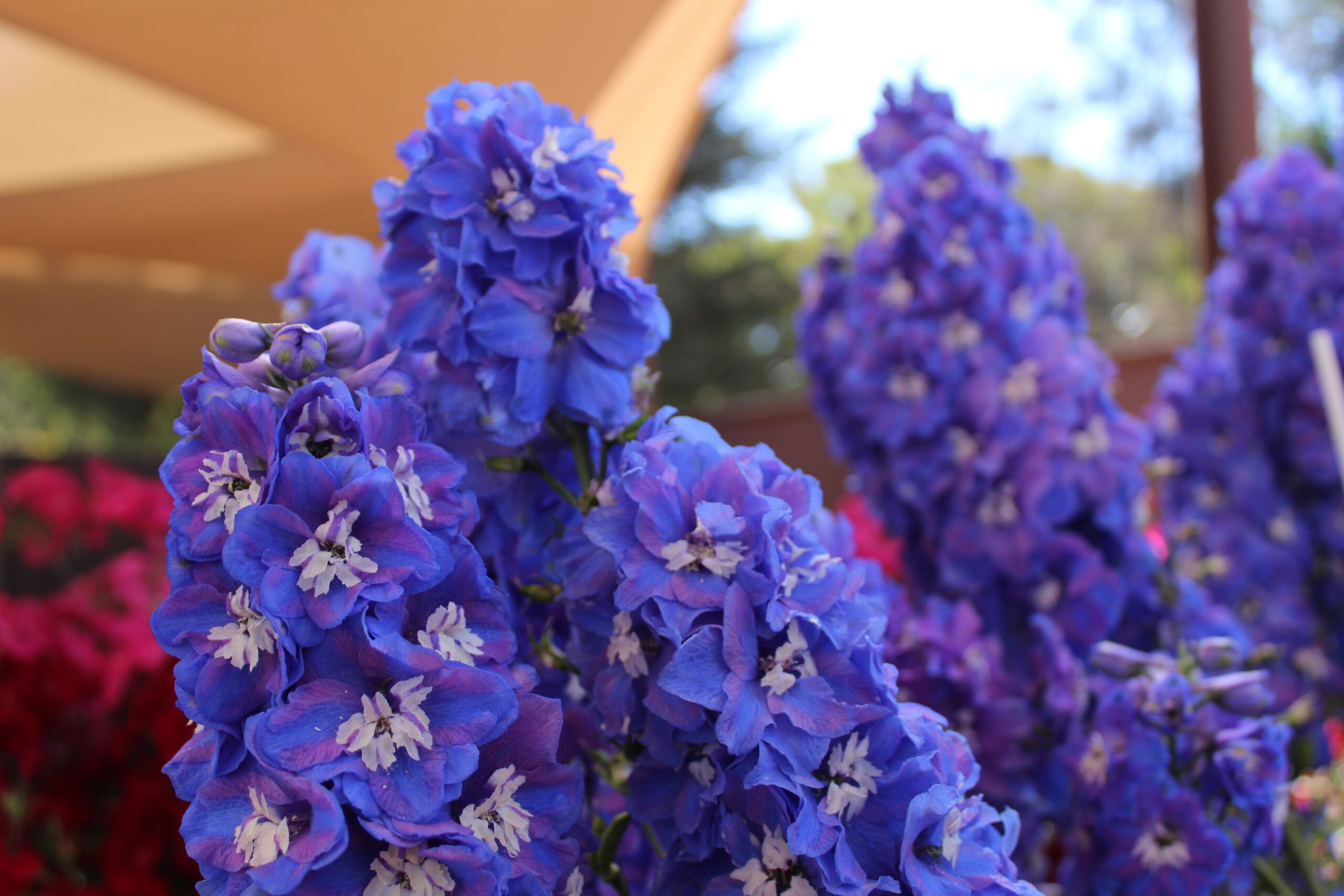By Claudette Sims, Halton Master Gardener
Perennials
Stake and support tall plants (e.g. peonies, delphiniums). You can give certain perennials a “Chelsea chop” (e.g. ironweed, asters, goldenrods, monarda, phlox) to keep them shorter and sturdier and encourage more stems and blooms.
Veggies
Stake or cage vegetables like tomatoes and beans as needed. Mound potatoes to maximize production and protect tubers from sun exposure. Avoid blossom end rot by watering tomatoes regularly. Direct sow warm season veggies such as corn, beans, cukes, and squash, and flowering annuals such as nasturtiums and cosmos. Grow herbs near the kitchen for easy access. Keep invasive mints and oregano in containers to contain spread.
Lawn
Follow good cultural practices to have a healthy lawn. Mow high, water less frequently but deeply, and feed with compost.
Water newly-planted trees and plants regularly; water lawn and existing trees less frequently but deeply. Potted plants will need more frequent watering. Use soaker hoses for water-wise gardening.
Weeds and invasives
Do weekly rounds of your garden to remove weeds and invasive plants. Use a line trimmer to keep weeds under control on bricked areas or driveways. Here’s a good ID guide for most weedy plants. Note that some native plants are included in many “weed” guides.
Spring bulbs
Pinch off tops to prevent them from going to seed. When leaves turn yellow, they can be removed and bulbs can also be lifted, divided, and replanted if too crowded.
Pests
Whenever possible, resist the urge to reach for a pesticide so that predatory insects have a chance to feed on insect pests. Japanese beetles appear in June. Hand pick, knock into a bucket of soapy water, or use a hand vacuum to suck them up! Aphids can be squished or knocked off plants using a strong spray from your garden hose. Make this totally non-toxic mosquito trap that will attract female mosquitoes and reduce overall numbers.
Reduce earwig numbers with traps to leave in the garden where earwigs are present, e.g. paper rolled up and secured with masking tape. Each day, tap the paper straw against a bucket of soapy water to empty the trap, then return to the garden. Replace the traps and repeat. Squash bug control — all you need is duct tape and this cool video (click here or watch above)! Inspect boxwood pests like box tree moth (BTM) on a weekly basis. Watch this BTM training video (click here or watch below) to learn more.
For more information on BTK application to combat box tree moths, which were particularly active earlier this year, and for more details on the Chelsea chop, click here to read this month’s full issue of Cross Pollination; you can also sign up to receive the newsletter into your inbox.





